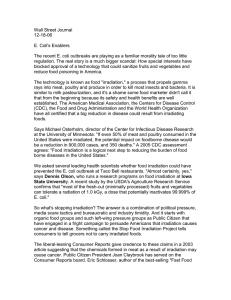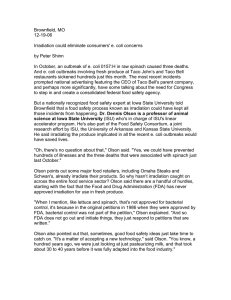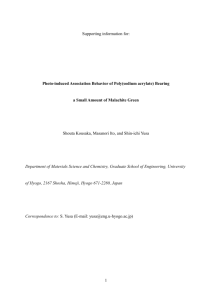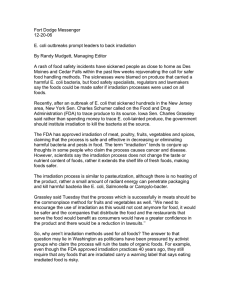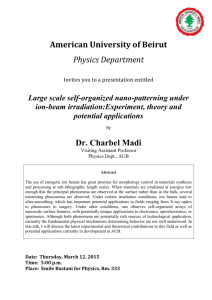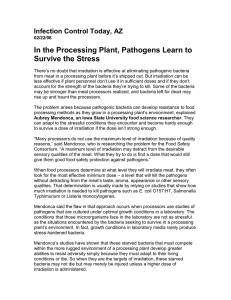Infection Control Today, AZ 12-13-06
advertisement
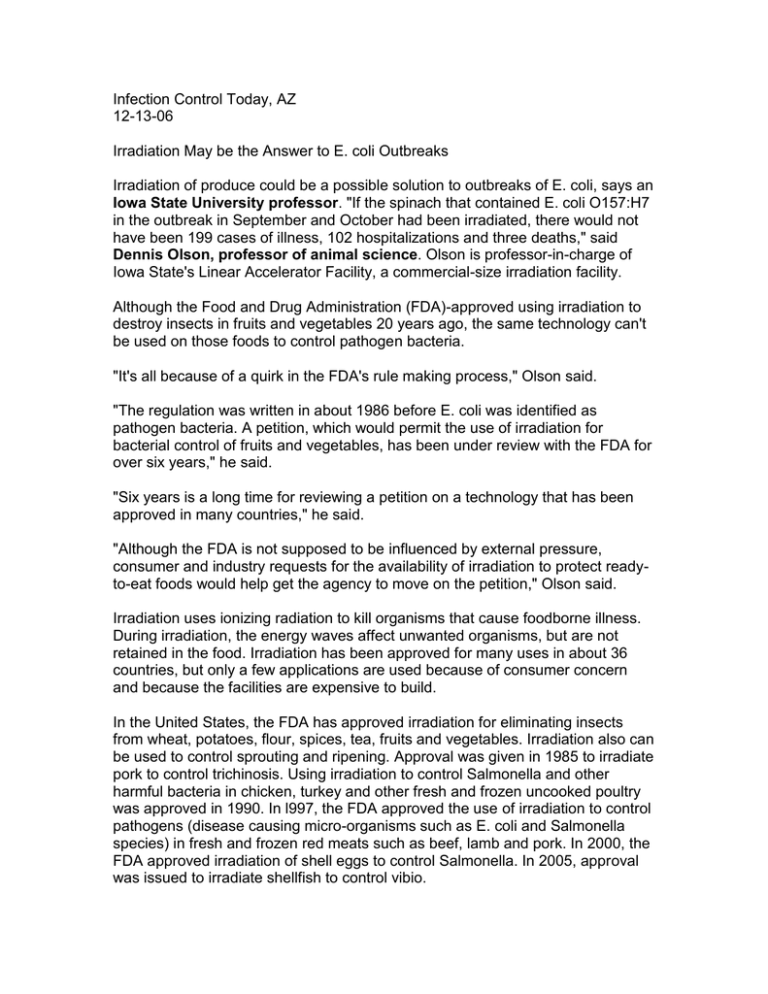
Infection Control Today, AZ 12-13-06 Irradiation May be the Answer to E. coli Outbreaks Irradiation of produce could be a possible solution to outbreaks of E. coli, says an Iowa State University professor. "If the spinach that contained E. coli O157:H7 in the outbreak in September and October had been irradiated, there would not have been 199 cases of illness, 102 hospitalizations and three deaths," said Dennis Olson, professor of animal science. Olson is professor-in-charge of Iowa State's Linear Accelerator Facility, a commercial-size irradiation facility. Although the Food and Drug Administration (FDA)-approved using irradiation to destroy insects in fruits and vegetables 20 years ago, the same technology can't be used on those foods to control pathogen bacteria. "It's all because of a quirk in the FDA's rule making process," Olson said. "The regulation was written in about 1986 before E. coli was identified as pathogen bacteria. A petition, which would permit the use of irradiation for bacterial control of fruits and vegetables, has been under review with the FDA for over six years," he said. "Six years is a long time for reviewing a petition on a technology that has been approved in many countries," he said. "Although the FDA is not supposed to be influenced by external pressure, consumer and industry requests for the availability of irradiation to protect readyto-eat foods would help get the agency to move on the petition," Olson said. Irradiation uses ionizing radiation to kill organisms that cause foodborne illness. During irradiation, the energy waves affect unwanted organisms, but are not retained in the food. Irradiation has been approved for many uses in about 36 countries, but only a few applications are used because of consumer concern and because the facilities are expensive to build. In the United States, the FDA has approved irradiation for eliminating insects from wheat, potatoes, flour, spices, tea, fruits and vegetables. Irradiation also can be used to control sprouting and ripening. Approval was given in 1985 to irradiate pork to control trichinosis. Using irradiation to control Salmonella and other harmful bacteria in chicken, turkey and other fresh and frozen uncooked poultry was approved in 1990. In l997, the FDA approved the use of irradiation to control pathogens (disease causing micro-organisms such as E. coli and Salmonella species) in fresh and frozen red meats such as beef, lamb and pork. In 2000, the FDA approved irradiation of shell eggs to control Salmonella. In 2005, approval was issued to irradiate shellfish to control vibio. Source: Iowa State University

